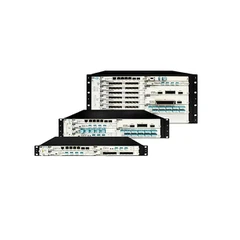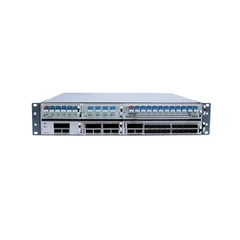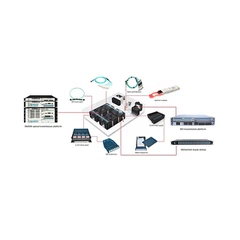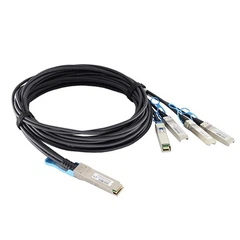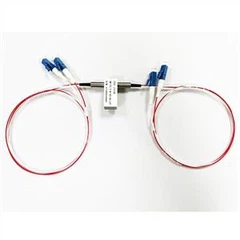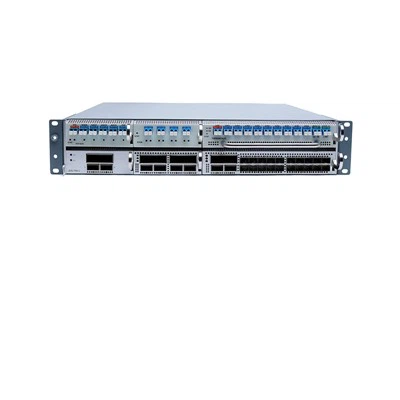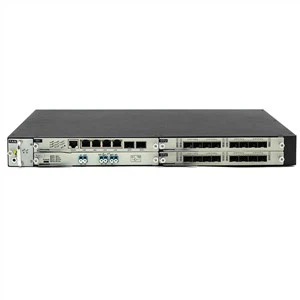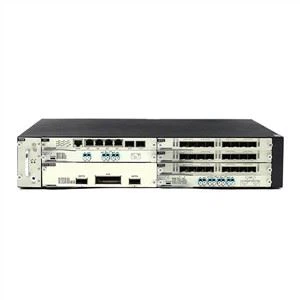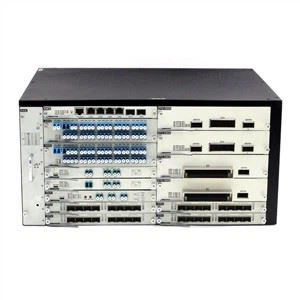According to ITU-T Recommendation specification, single-mode fiber can be divided into G.652 (dispersion non shifted single-mode fiber), G.653 (dispersion shifted fiber), G.654 (truncated wavelength shifted fiber), G.655 (non zero dispersion shifted fiber), G. 656 (low slope non-zero dispersion shifted fiber), and G.657 (bend resistant fiber) single-mode fiber. Among them, G.652 and G.655 single-mode fibers are the most common types. This paper will explain the classification and difference of these two single-mode fibers in detail.
Introduction of G. 652 optical fiber
G. 652 fiber is a widely used single-mode fiber, which is called 1310nm single-mode fiber with the best performance, also known as dispersion unshifted fiber. According to the refractive index profile of fiber core, it can be divided into matched cladding fiber and depressed cladding fiber. The performance of the two kinds of fiber is very similar. The former is simple to manufacture, but the macro bend loss and micro bend loss are slightly larger in 1550 nm wavelength region; the latter is slightly larger in connection loss.
Main indicators
1. Attenuation: ITU-T G.652 recommends that the attenuation constant of optical fiber in 1310nm window and 1550nm window should be less than 0.5db/km and 0.4db/km respectively. 1310 window is generally in the range of 0.3-0.4db/km, with a typical value of 0.35db/km; 1550 window is generally in the range of 0.17-0.25db/km, with a typical value of 0.20db/km.
2. Dispersion: the allowable range of zero dispersion wavelength is 1300 ~ 1324nm. The dispersion coefficient is positive at 1550 nm. At 1550nm, the typical value of dispersion coefficient D is 17ps / (nm · km), and the maximum value is generally less than 20ps / (nm · km).
3. PMD: ITU-T recommends that the PMD coefficient of G.652 fiber is less than 0.5ps / (km) ^ 1 / 2, that is, the PMD of 400km fiber is 10ps. However, due to the limitation of the process conditions at that time, the PMD coefficient of the early laying optical fiber may be larger.
4. Mode field diameter: the mode field diameter at 1310nm is 8.6 ~ 9.5 μ m, and the maximum deviation cannot exceed ± 10%. At 1550nm, the mode field diameter is not specified in ITU-T recommendation, but it is generally larger than 10.3 μ m.
G. 652 single mode fiber can be divided into four types: G.652A, G.652B, G. 652C and G. 652D, and its core diameter ranges from 8 μ m to 10 μ m. Among them, G.652A and G.652B single-mode fibers have zero dispersion wavelength near 1310nm, which is very suitable for 1310nm band applications. Because of its water absorption, G.652A and G.652B single-mode fibers are not suitable for WDM applications. G. 652C and G. 652D single-mode fibers have lower attenuation coefficient at 1550nm and eliminate the water absorption peak near 1380nm. They can work in 1360nm ~ 1530nm to support wavelength division multiplexing (WDM) transmission. Among them, G. 652D single-mode fiber is the most stringent index single-mode fiber in all G.652 levels, and it can be completely downward compatible. It is the most advanced non dispersion shifted single-mode fiber applied in man at present, which is no different from ordinary G.652 fiber in structure. The figure below lists the basic parameters of four types of G.652 single mode fiber.
G.652.A | G.652.B | G.652.C | G.652.D | |
Wavelength range | 1310nm-1550nm | 1310nm-1625nm | 1310nm-1625nm | 1310nm-1625nm |
Maximum attenuation coefficient | 1310nm:0.5dB/km 1550nm:0.4dB/km | 1310nm:0.4dB/km 1550nm:0.35dB/km 1625nm:0.4dB/km | 1310nm~1625nm;0.4dB/km 1383 nm ± 3 nm:0.4dB/km 1550nm:0.3dB/km | 1310nm~1625nm:0.4dB/km 1383nm ± 3nm:0.4dB/km 1530-1565nm:0.3dB/km |
Application | Support 10G and 40G transmission (10G maximum transmission The transportation distance is 40 km).
| Support high transmission rate Applications, such as 10G transmission. | It is similar to the application of G.652. A single-mode fiber, but its transmission band can be extended to E, S and l bands, which is very suitable for CWDM transmission. | It is similar to the application of G.652. B single mode fiber, but its transmission band can be extended to E and S bands, which is very suitable for CWDM transmission. |
E band:The wavelength range is 1360nm~1460nm。 S band: The wavelength range is 1460nm~1530nm。 C band:Conventional band,The wavelength range is 1530nm~1565nm。 L band: The wavelength range is 1565nm~1625nm。 | ||||
G. 652 optical fiber is the most widely used optical fiber. At present, in addition to FTTH, almost all the optical fibers used in long-distance and metropolitan areas are G.652 optical fiber.
From the energy distribution of light, the optical signal in single-mode fiber is not only transmitted in the core, but also in the cladding. It can be seen from the attenuation coefficient diagram of conventional single-mode fiber that the attenuation of the fiber is small at 1310nm and 1550nm, and 1310nm and 1550nm also become the two most commonly used wavelength windows of single-mode fiber.

G. 655 single mode fiber type
Since the dispersion of G.655 single-mode fiber is close to zero but not equal to zero at 1550nm, it is also called non-zero dispersion shifted fiber or NZDSF (non zero dispersion shifted fiber).
Compared with G.652 single-mode fiber, G.655 single-mode fiber has lower dispersion in C-band (1530nm ~ 1565nm). In this band, the function of optical amplifier can be brought into full play, and the core area of the fiber is larger. As an improved dispersion shifted single-mode fiber, G.655 single-mode fiber can balance four wave mixing and other nonlinear effects. The G.655 single-mode fiber supporting longer distance and larger capacity can meet the requirements of dense wavelength division multiplexing (DWDM) transmission.
G. 652 and G.655 single mode fiber: how to choose?
G. 652 single mode fiber is usually used in LAN, man, access network and CWDM transmission. Among them, WDM transmission is an economical and efficient choice. Generally, G.652 single-mode fiber without optical signal amplification is used for short distance transmission. The G.655 single-mode fiber is the second common type of fiber in terrestrial network, which is characterized by low dispersion (including dispersion and polarization mode dispersion), and is generally deployed in long-distance transmission network and DWDM transmission network.
G. 652 single-mode fiber and its upgraded G.657 single-mode fiber are low-cost standard single-mode fibers, which are very suitable for short distance transmission with transmission rate less than 10Gbps. If you need higher transmission rate than 10Gbps or higher performance over longer transmission distance, G.655 single mode fiber is a good choice regardless of cost.
G. 655 fiber shifts the zero dispersion point to 1550 instead of G.653, which eliminates four wave mixing and is suitable for WDM system. G. 652 fiber is the most widely used fiber, which has two windows at 1310nm and 1550nm. At 1310nm, the dispersion is small but the attenuation is large, and at 1550nm, the attenuation is small but the dispersion is large. Therefore, the fiber type can be distinguished by using the fiber dispersion meter near 1550nm.
HTF's products quality is guaranteed, and the accessories are imported.
Contact: support@htfuture.com
Skype :sales5_ 1909,WeChat :16635025029

